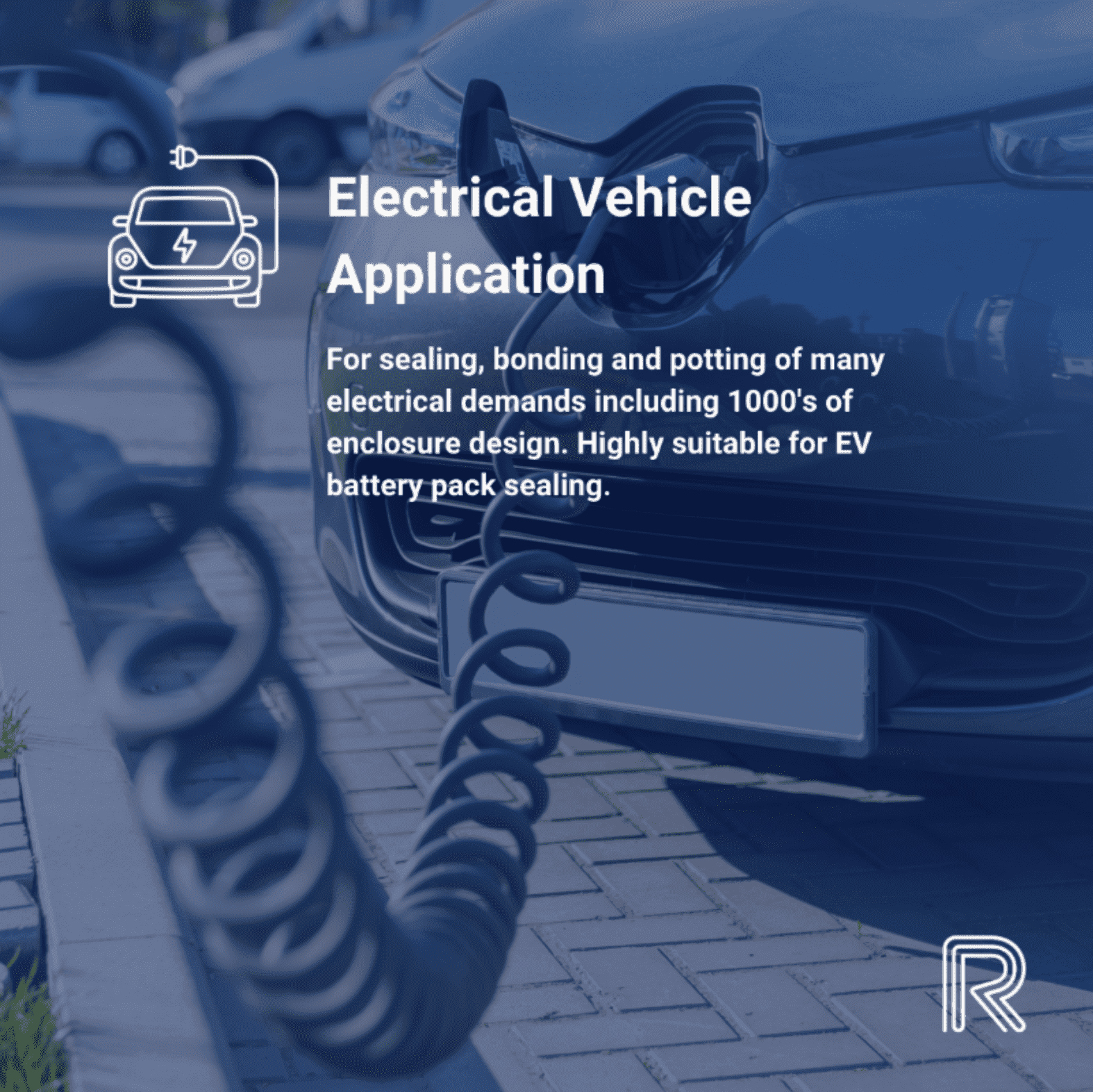As pledged by the current government, the UK is hoping to stop all production of petrol and diesel cars by 2030. There is therefore a pressure on automotive companies to produce safe and effective HEV and BEVs by this point, in order to reduce the amount of carbon pollution that is produced in our country and ensure a positive impact on the world around us.
One element which has been a significant and demanding challenge for OEMs is the sealing of the battery packs. Water ingress can result in a significant fire hazard, as experienced by the company Tesla with their early models. It is also necessary to create a faraday cage around the battery cells for safety and shielding reasons.
When looking at sealing battery enclosures, an OEM has a number of options to consider:
- They can use a “wet” curing adhesive, which effectively bonds the battery enclosure together. This does work very effectively as a seal. However, when it comes to servicing the battery packs, which will be a requirement for the OEM’s, the separation of this bonded joint is very difficult, and the residue must be cleaned off prior to re-bonding the assembly.
- A non-setting, “tacky polymer” applied to the assembled joint. This is more troublesome to apply than Option 1 as it tends to be a viscos product. Separation is easier as the polymer hasn’t set however, its tacky nature means that dirt and debris will be attracted to the surface. This may result is subsequent re-assembly of the joint being less effective. Cleaning off and re-application would also be very troublesome.
- A foam cord or cut gasket applied to the joint before assembly. As this type of sealing method must be done manually (automation is not possible), it represents a significant challenge. Some of JLR’s battery packs are approx. 2.5m x 1.5m in size. Also, the potential for human error in the process is significant, which can lead to quality concerns.
This is where Robafoam’s foam seals come into play. Our robotically applied foam can provide high performance water-tight IP rated seals which overcome many of the problems presented by these companies.
The single component polyurethane foam is applied by a 6 axis robot to directly the required part. The application process means that the seal is applied perfectly again and again, on any substrate, without the worry of human error. At Robafoam we have worked with UK based chemists to create a raw material that, when combined with compressed air, produces a foam which only requires thermal activation in order for it to cure.
The foam is based on polyether polyols and aliphatic isocyanates and has an extremely low proportion of free monomers (<0.05 per cent by weight). Density and shore hardness can be adjusted by increasing or decreasing the amount of air within the material. The method of application and liquid foam characteristics makes it possible to create 3D or overhead applications without the foam running. There is also no groove on the part surface needed for application, although the method of compression must be controlled. Once cured using a thermal oven, it provides outstanding material properties, such as excellent resistance to hydrolysis, low water absorption and very good recovery behaviour.
The recovery behaviour means that when used on battery packs, they are able to be opened and closed without needing to remove the seal or causing the effectiveness of the seal to be compromised. Robafoam’s new Technical Centre has also been designed to accommodate the size of these battery packs (accommodating parts up to 2m x 3m) for both R&D purposes but also includes the safety features needed to use it as a full production cell as well.
The lab cell’s main purpose is to provide support and testing for automotive customers including designers and those who work in R&D who have been tasked with helping Britain achieve the government set goal of only producing fully electric vehicles by 2030. The current work taking place at the Gigafactory just outside Coventry makes Robafoam Ltd (located in Leamington Spa) perfectly placed to support these automotive companies as we move forward into a greener way of life.
Robafoam will be showcasing our sealing capabilities and offering more information at the Vehicle Electrification Expo in the NEC Birmingham on 29th and 30th June 2022. If are an OEM looking for sealing options for an electric vehicle and have any further questions, please visit us at stand 17-717.

